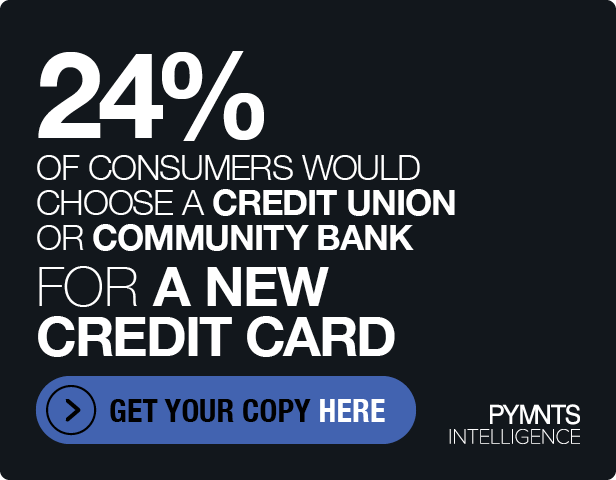Will Ad Blockers Drive Mobile Commerce Innovation?

[vc_row full_width=”” parallax=”” parallax_image=””][vc_column width=”1/1″][vc_column_text css_animation=””]
Could the rise of mobile ad blockers be the “killer app” that mobile commerce has been looking for all of these years?
Ad blockers got the Internet buzzing last week, mostly as the result of Apple’s decision to include ad-blocking capabilities in its iOS 9 release. Dozens of articles made their way around the Internet bemoaning the “unintended consequences” of Apple’s decision. An Atlantic magazine story pondered the downside of an ad-free Internet and the simultaneous disappearance of publishers who rely on ad revenues to keep their virtual doors open. Fortune raised a similar question and even mused whether using an ad blocker is morally wrong. The New York Times documented the backlash over Apple’s decision to allow consumers to block ads with iOS 9.
Of course, all these articles contained dozens of banner ads, skyscrapers and pop-ups. The traditional media knew where their bread was buttered. And, boy, should they be worried (and developing an appetite for dry bread).
[/vc_column_text][vc_custom_heading text=”Blocking ads is nothing new.” font_container=”tag:h2|text_align:left” google_fonts=”font_family:Abril%20Fatface%3Aregular”][vc_column_text css_animation=””]
PageFair, the leading provider of ad-blocking software, reports that there are 198 million active users of ad-blocking software worldwide with its application downloaded nearly 400 million times. There are 45 million ad block users in the U.S., roughly 30 percent of all Internet users. The growth of ad-blocking software is also increasing rapidly — in the double digits everywhere in the world. The most active users are millennials, nearly half of whom say they use it.
[/vc_column_text][vc_single_image image=”167449″ alignment=”center” border_color=”grey” img_link_large=”” img_link_target=”_self” img_size=”full”][vc_column_text css_animation=””]In an effort by publishers to capture the revenue lost from the good old days of print advertising premiums, they’ve resorted to selling every available piece of real estate they could on their webpages. Advertisers were promised leads from the eyeballs that had shifted their gazes to the Web. New Internet businesses in search of a revenue model thought they saw an easy one and followed suit for all of the same reasons and with all of the same promises to advertisers. Ad serving platforms, eager to cash in on this digital gold rush, opened their virtual doors to serve the growing numbers of digital outposts with a never-ending stream of ads.
What could be better?
Just about everything.[/vc_column_text][vc_custom_heading text=”CONSUMERS DON’T HATE ADS, THEY JUST HATE HOW THEY’RE DELIVERED” font_container=”tag:h2|text_align:left” google_fonts=”font_family:Abril%20Fatface%3Aregular”][vc_column_text css_animation=””]
Ad-blocking software isn’t a slap against advertising or even advertisers. Consumers like advertising.
In fact, sporting events like The Super Bowl and even the Olympics are as much about the ads as they are about football and the athletic competition. Consumers just don’t like being assaulted by ads each and every time they visit a webpage.
Back when I read print newspapers, I never minded seeing the Tiffany’s ad in the upper right corner of Page 3 of The Wall Street Journal, nor the full page ads that Macy’s ran in The New York Times. Ditto the 750 pages of ads in the 900-page edition of Vogue’s fall fashion issue. What I didn’t care to focus on, I could easily skip past by simply turning the page.
[/vc_column_text][vc_custom_heading text=”That’s hardly the case with digital ads. There’s no escaping them.” font_container=”tag:h2|text_align:left” google_fonts=”font_family:Abril%20Fatface%3Aregular”][vc_column_text css_animation=””]
Open up any site now online — from The Wall Street Journal, to The New York Times to the tiniest blog to the ever-growing roster of trade publications — and ads are everywhere and, quite literally, in your face.
They’re intrusive and distracting. Many of them fill the screen before you even get to the piece of content you want to read. Others interrupt the story with pop-ups forcing you to give up your email address. Banners fill the top third of the screen and sometimes launch videos with the sound blaring without any prompting. All of them cause webpages to load slowly. And, the smaller the screen, the worse the experience.
To escape the ads, you have to escape the site. Many consumers do, some never to return again, given the lousy experience.
[/vc_column_text][vc_custom_heading text=”IS THE WORST YET TO COME?” font_container=”tag:h2|text_align:left” google_fonts=”font_family:Abril%20Fatface%3Aregular”][vc_column_text css_animation=””]If analysts can be believed, this could get even worse if advertisers and media have their way. Advertising spend all over the world is on the rise. Digital advertising is leading the way and regarded as advertising’s lifeline, accounting for about a third of all advertising in 2015 most everywhere in the world. In the U.S. alone, in 2015, digital advertising will hit $53 billion.[/vc_column_text][vc_custom_heading text=”No wonder the consumer’s appetite for ad-blocking software has never been greater.” font_container=”tag:h2|text_align:left” google_fonts=”font_family:Abril%20Fatface%3Aregular”][vc_column_text css_animation=””]And Apple’s decision to enable ad blocking in iOS 9, perhaps, a pretty smart move.
As I wrote last week, Apple is all about controlling the experience inside of its ecosystem. Giving consumers who own and use Apple devices a way to block the ads they find intrusive on a small screen is one more way that Apple is doing that. That will, of course, advantage apps and Apple’s app store (and business model) in the process, as more and more of the consumer’s attention span and eyeballs shift to the mobile platform.
 According to the latest report from Flurry, Americans spend 43 more minutes each day on their mobile devices – some 3 hours and 40 minutes now. Ninety (90) percent of that time is spent inside of mobile apps. Facebook, YouTube and Messaging apps account for most of that time – with Facebook emerging as the clear leader – one-fifth of time on mobile is spent inside of Facebook.
According to the latest report from Flurry, Americans spend 43 more minutes each day on their mobile devices – some 3 hours and 40 minutes now. Ninety (90) percent of that time is spent inside of mobile apps. Facebook, YouTube and Messaging apps account for most of that time – with Facebook emerging as the clear leader – one-fifth of time on mobile is spent inside of Facebook.
Which brings me to why all of this could be the foundation for creating the elusive mobile commerce killer app.
[/vc_column_text][vc_custom_heading text=”AD BLOCKERS – THE BEST THING TO HAPPEN TO MOBILE COMMERCE INNOVATION?” font_container=”tag:h2|text_align:left” google_fonts=”font_family:Abril%20Fatface%3Aregular”][vc_column_text css_animation=””]
Everyone who’s written about ad blockers are bemoaning the fate of the publishers who need the revenue to prop up their business models.
What no one’s talking about is the advertisers who’ve been throwing money at ad networks for years.
And maybe annoying more customers than they actually convert and collectively making advertising on mobile stink like a skunk at a picnic.
And why ad blockers could shift the advertising advantage to innovators – innovators who use mobile and technology to link advertisers with consumers and deliver an eyeball that’s in the buying mode. And, as important, deliver a proof point that an actual sale was made.
Nowhere is the shift to digital creating more of a sea change than in payments – and that disruption goes well beyond designing a well-functioning checkout button on a site or in an app. The plastic card and the physical store are still relevant and will remain so for some time. The mobile device, of course, is the onramp to payment’s digital future.
But everyone understands that in a digital world, payments is becoming a necessary end to a higher order means – enabling a richer commerce experience for the consumer and the merchant.
Naturally, making the mobile checkout experience simple and frictionless where consumers buy is priority No. 1 and why “buy buttons” are the digital economy’s “it” accessory.
But also why turning mobile commerce apps into the platforms that enable the delivery of relevant merchant offers — and redemption via the accounts that consumers attach to those apps — could become the most efficient and reliable way for advertisers to reach a consumer, for a merchant to make a sale and the commerce loop to deliver a compelling ROI.
[/vc_column_text][vc_custom_heading text=”NOT YOUR FATHER’S CARD- LINKED OFFERS PLATFORM” font_container=”tag:h2|text_align:left” google_fonts=”font_family:Abril%20Fatface%3Aregular”][vc_column_text css_animation=””]
If that sounds like card-linked offers, well, it sort of should. But, even the big card-linked offers players admit that they haven’t exactly set the world on fire these last few years. Ill-timed, irrelevant offers that lacked a real-time consumer feedback loop have failed to impress many consumers, which has made it harder to get merchants with better offers to play along.
But mobile commerce apps can bring new life to this concept – and now a growing roster of new players into the mix to enable a better experience.
Instead of ad networks and intrusive ads, offers networks could pool a variety of promotions that could be directed to consumers based on shopping habits, merchant and product preferences, and geography in real time – and appended to the accounts that consumers have registered with mobile commerce providers. Consumers could be advised of promotions that are relevant to them when it’s relevant for them to be reminded and advertisers can increase their chances of making a sale to a qualified buyer. Payments players can strengthen their relationship with the consumer and advertisers can streamline and improve redemption – and finally attribute their promotional efforts to a sale.
And, innovators get the chance to reinvent the commerce ecosystem around a set of activities that finally deliver real value to all stakeholders.
I wrote some time ago that the traditional advertising industry was ripe for disruption given both the shrinking consumer’s attention span and the shift to mobile. I suggested in that piece that those with the vision to reinvent how advertisers and consumers got together and create the proof point that a sale was made – and do that at scale – would win and redefine the path to purchase and conversion in a very material way. Maybe ad-blocking software’s introduction into the mobile environment is the spark that the ecosystem needs to move that idea along.
So – note to innovators — if your model is ad-supported and/or your customers require an ad-supported business model to survive, better get busy figuring out your Plan B. If you’re a player with scale and/or the secret sauce to help someone with scale to enable a new model that releases advertisers from the digital ad revenue purgatory they’re stuck with today, stop feeling sorry for publishers and start cozying up to advertisers who want a better way close the deal and have a strong incentive to make a change.
And embrace ad-blocking software for the innovation spark that it is.
[/vc_column_text][/vc_column][/vc_row]
